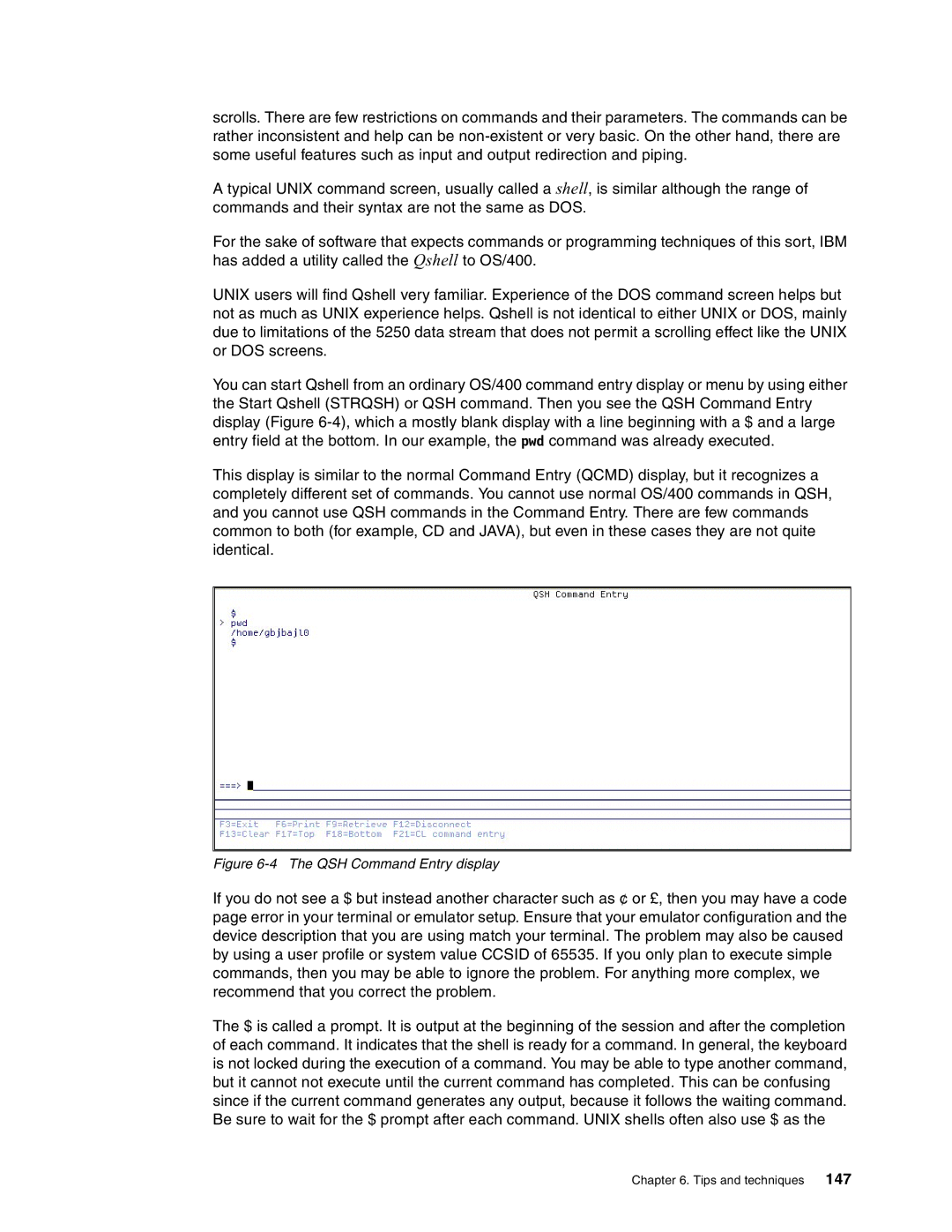
scrolls. There are few restrictions on commands and their parameters. The commands can be rather inconsistent and help can be
A typical UNIX command screen, usually called a shell, is similar although the range of commands and their syntax are not the same as DOS.
For the sake of software that expects commands or programming techniques of this sort, IBM has added a utility called the Qshell to OS/400.
UNIX users will find Qshell very familiar. Experience of the DOS command screen helps but not as much as UNIX experience helps. Qshell is not identical to either UNIX or DOS, mainly due to limitations of the 5250 data stream that does not permit a scrolling effect like the UNIX or DOS screens.
You can start Qshell from an ordinary OS/400 command entry display or menu by using either the Start Qshell (STRQSH) or QSH command. Then you see the QSH Command Entry display (Figure
This display is similar to the normal Command Entry (QCMD) display, but it recognizes a completely different set of commands. You cannot use normal OS/400 commands in QSH, and you cannot use QSH commands in the Command Entry. There are few commands common to both (for example, CD and JAVA), but even in these cases they are not quite identical.
Figure 6-4 The QSH Command Entry display
If you do not see a $ but instead another character such as ¢ or £, then you may have a code page error in your terminal or emulator setup. Ensure that your emulator configuration and the device description that you are using match your terminal. The problem may also be caused by using a user profile or system value CCSID of 65535. If you only plan to execute simple commands, then you may be able to ignore the problem. For anything more complex, we recommend that you correct the problem.
The $ is called a prompt. It is output at the beginning of the session and after the completion of each command. It indicates that the shell is ready for a command. In general, the keyboard is not locked during the execution of a command. You may be able to type another command, but it cannot not execute until the current command has completed. This can be confusing since if the current command generates any output, because it follows the waiting command. Be sure to wait for the $ prompt after each command. UNIX shells often also use $ as the
Chapter 6. Tips and techniques 147
